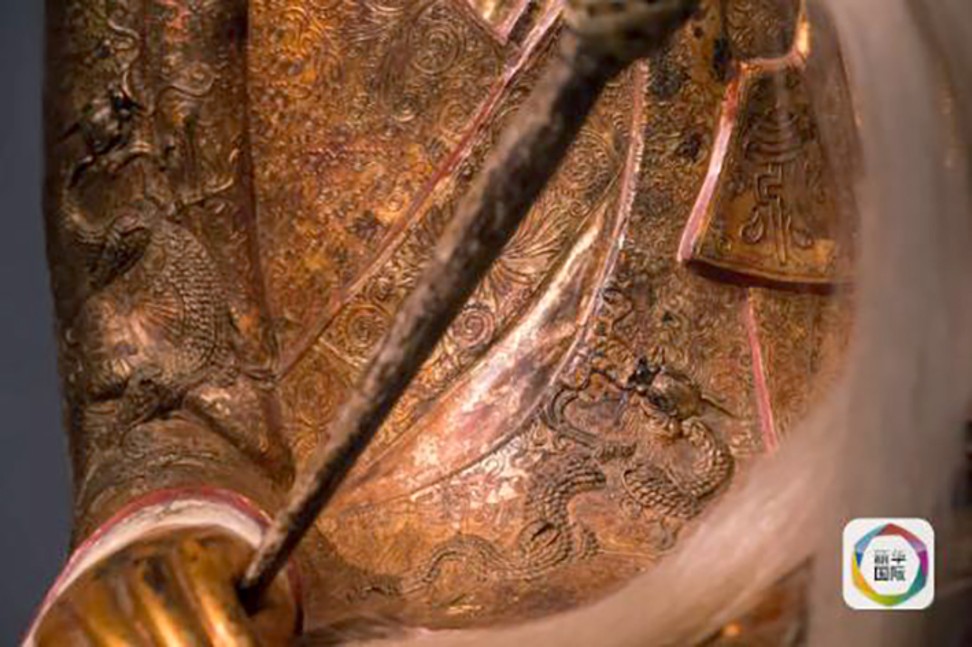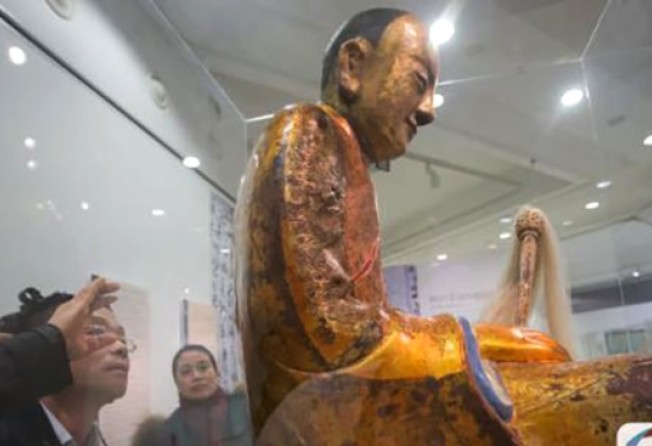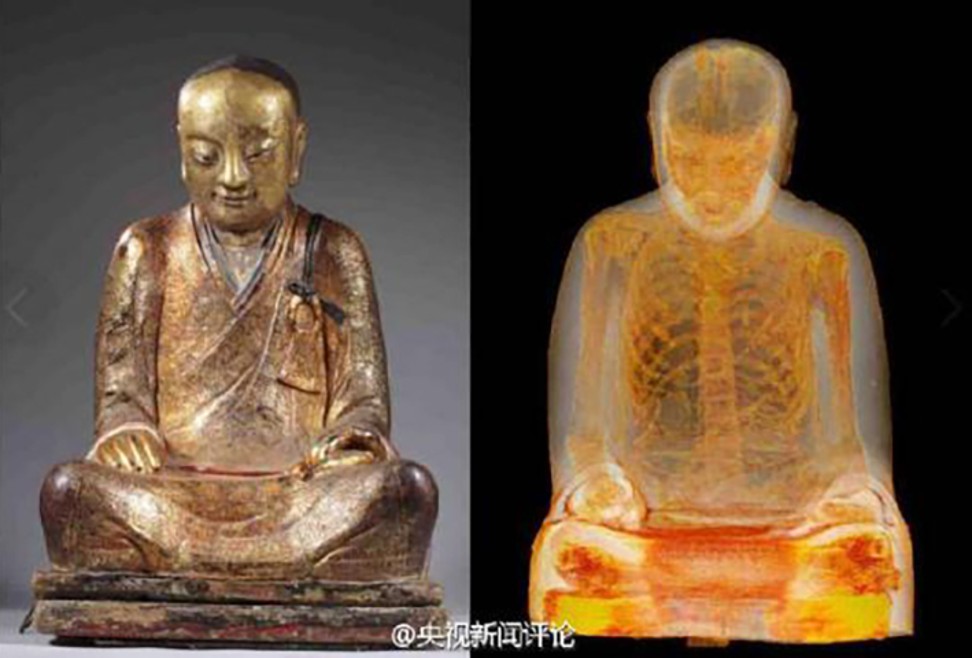
Fujian villagers wait for court verdict in bid for return of beloved Buddhist mummy
Case in Netherlands to decide ownership of 1,000 year old statue stolen from a Chinese village temple in 1995

Villagers in southeast China are anxiously awaiting a court ruling over the ownership of a stolen Buddhist mummy after the first public hearing opened in the Netherlands on Friday, official media reports.
The lawsuit was filed by the village committee of Yangchun in Fujian province against a Dutch collector two years ago when the mummy, stolen from the village’s Buddhist temple in 1995, was recognised at a museum exhibition in Hungary, according to Ecns.cn, the English-language website of the China News Service.
Oscar van Overeem, a Dutch architect, bought the relic from a Hong Kong art dealer in 1996. Negotiations for its return eventually broke down, so in June last year, group of volunteer lawyers including one from the Netherlands took the case to a local court on behalf of the villagers.
According to Dutch law, the hearing is open to the public and the judge will hear statements from both sides, although a ruling will not be issued immediately on the spot.
The 1,000-year-old Buddhist mummy, known as the Zhanggong Patriarch, has long been worshipped by locals. In May, 2015, villagers told the New York Times how it had been worshipped for centuries, and of their heartbreak when it disappeared. Worshippers had gone to great lengths to protect the mummy during Mao’s Cultural Revolution by hiding it their homes and even in holes in the fields.
“We can only wait and feel the burning in our chest. If it’s good news, we will be relieved. If not, many of us will shed tears,” Lin Wenqing, a villager helping search information of the mummy, told the Jiemian News. “We hope there will be a favourable result this time.”
Until its disappearance, the mummy was enshrined and worshipped by both Yangchong village and neighbouring Dongpu village since the Song Dinasty (960–1279 AD).
A CAT scan of the statue several years ago confirmed that it contained the remains of a mummified monk.
